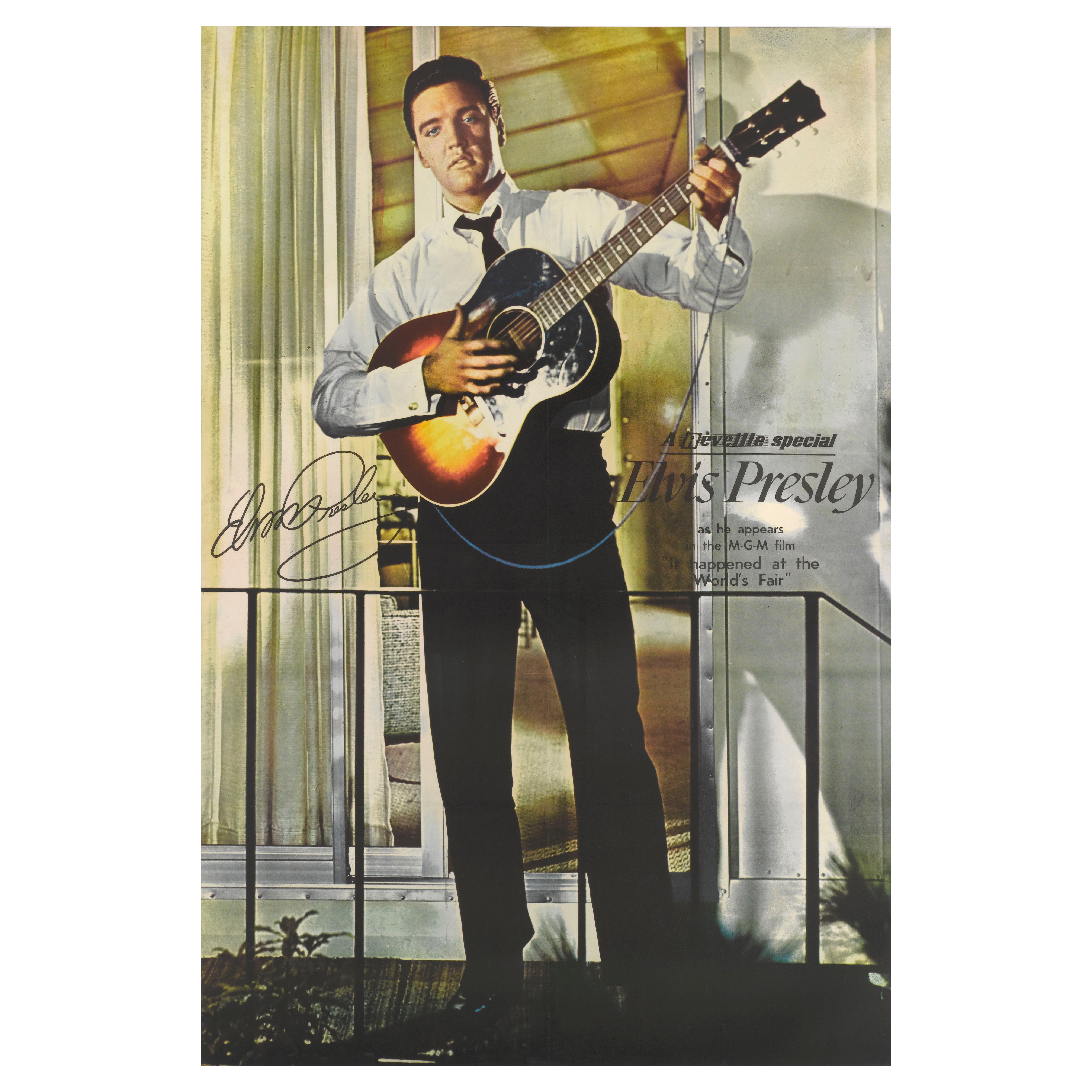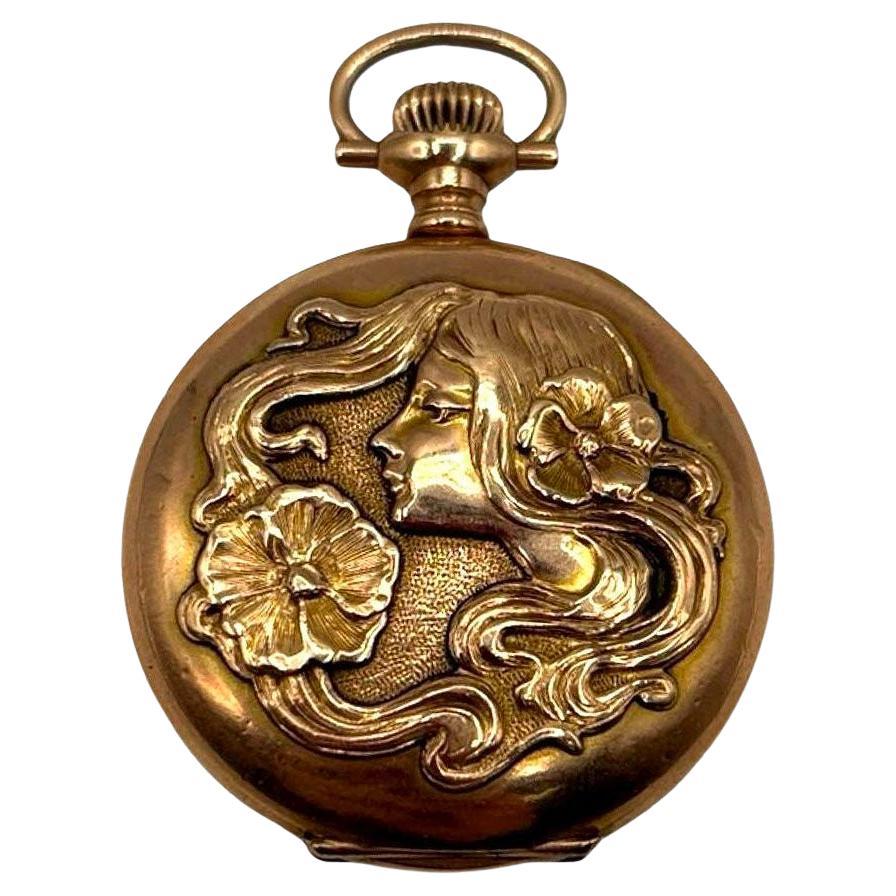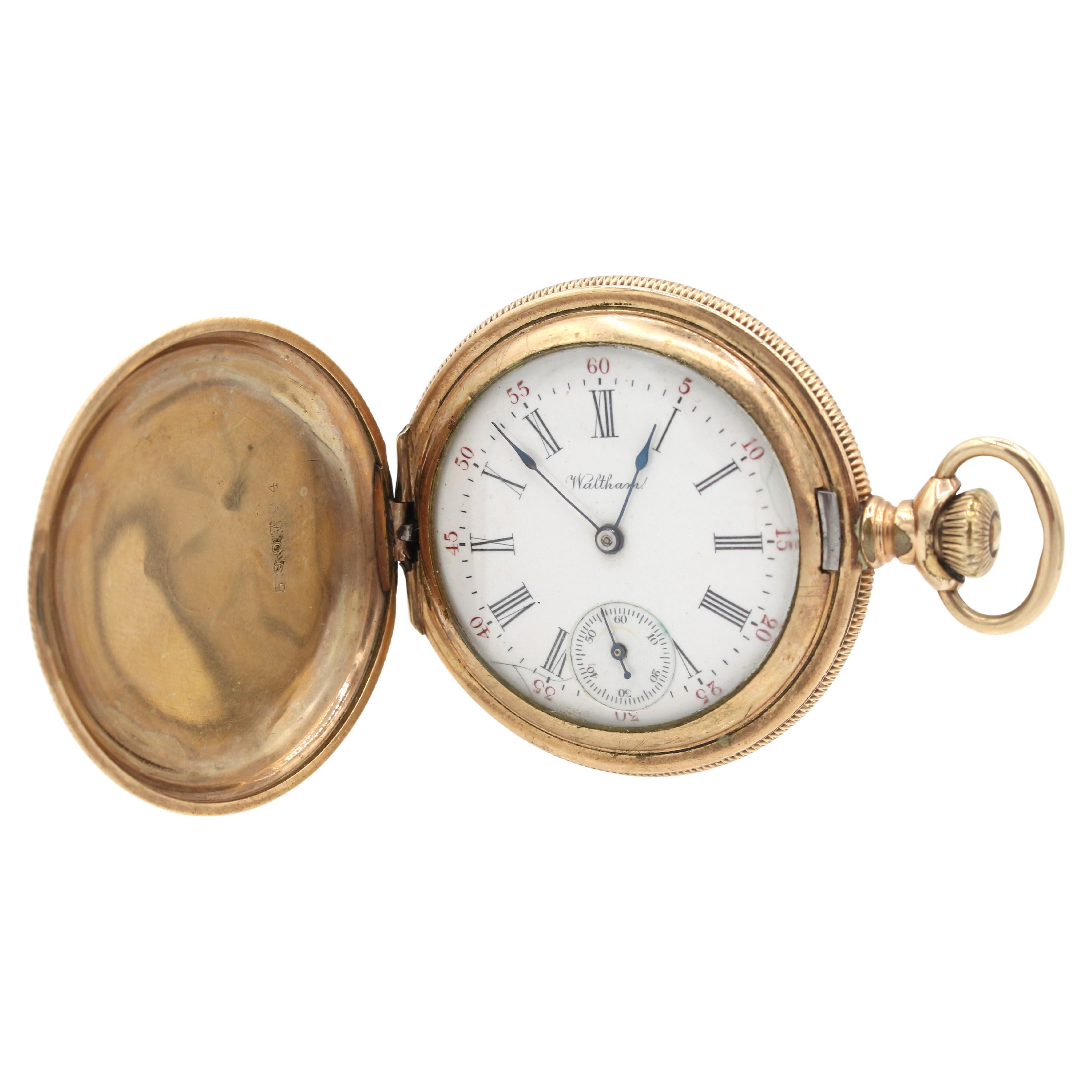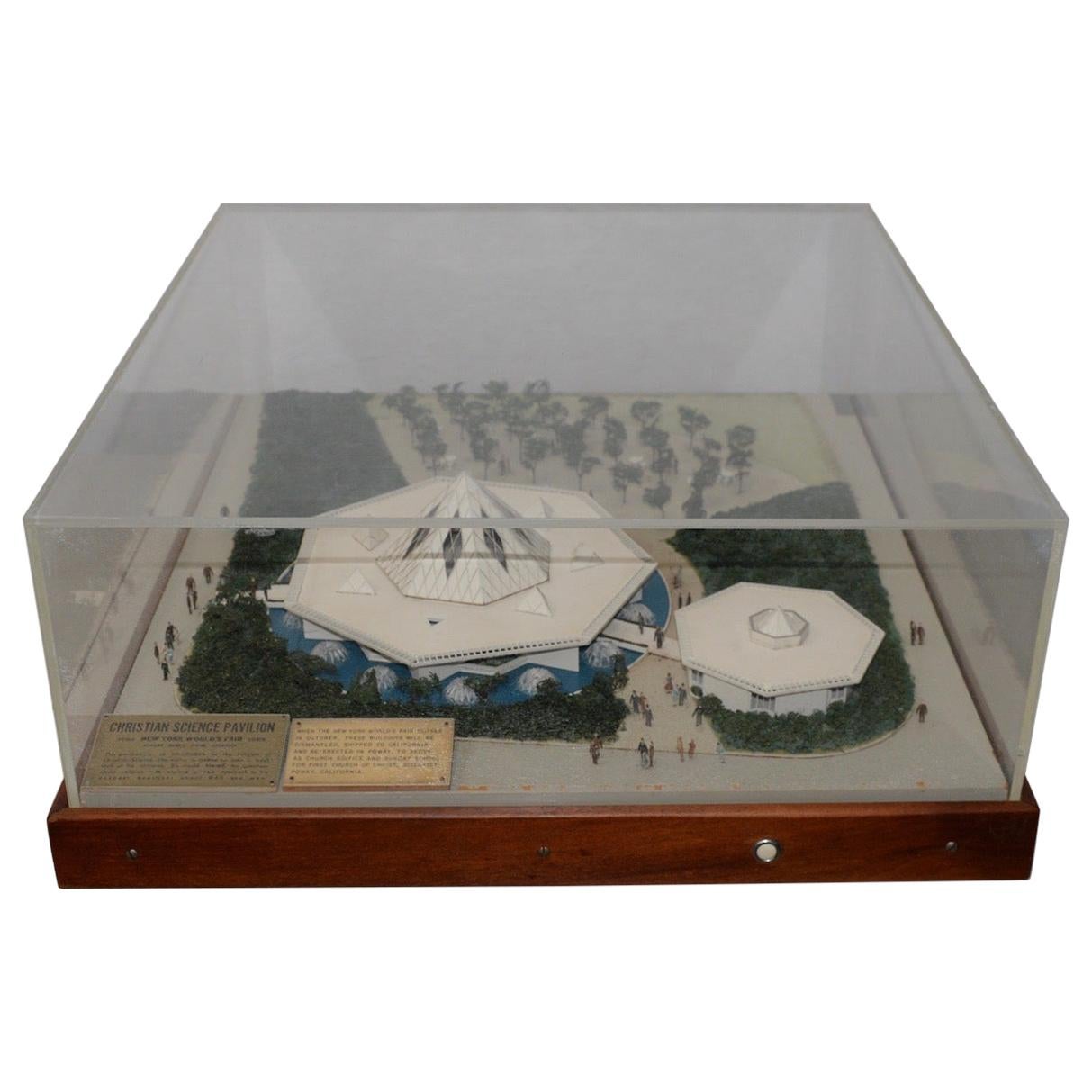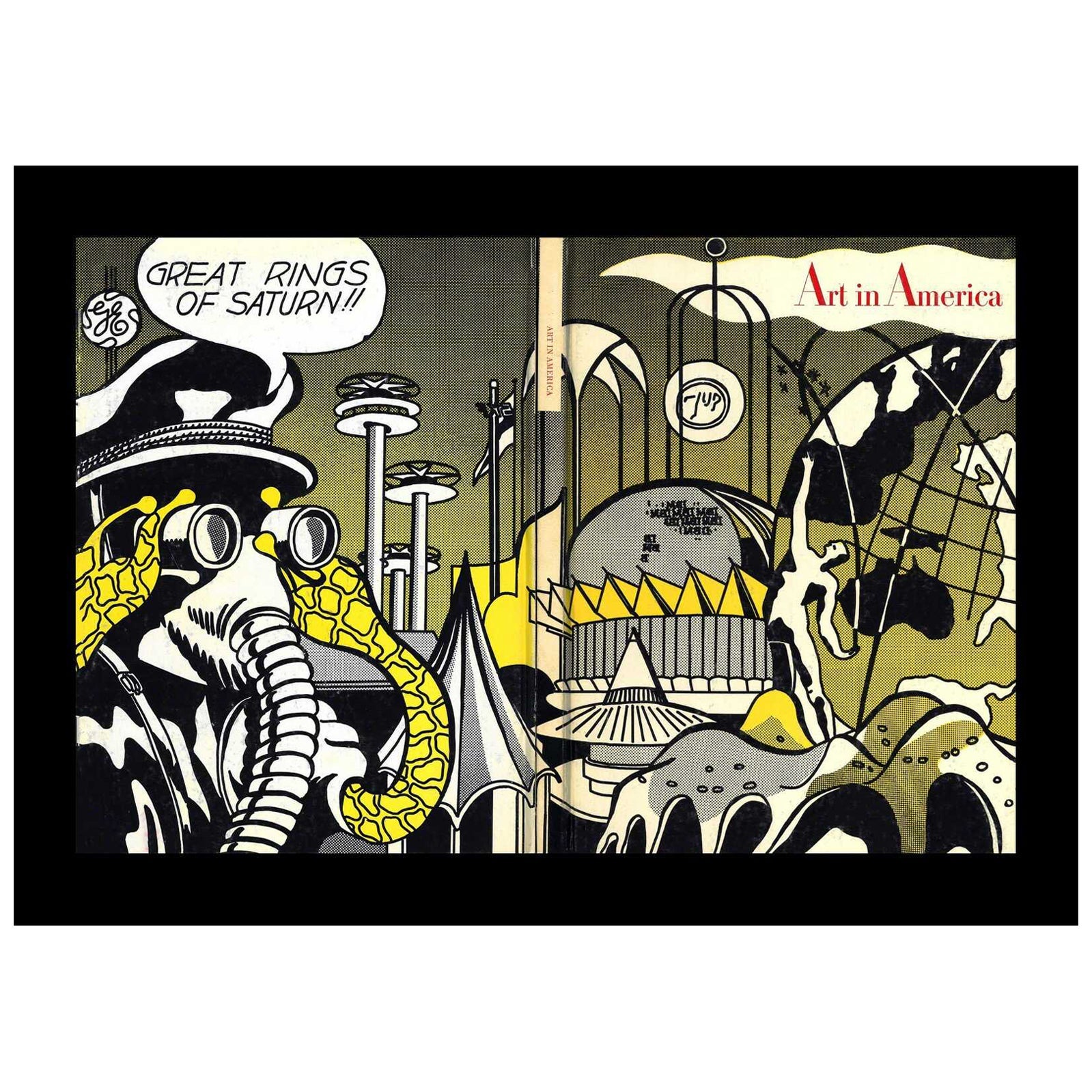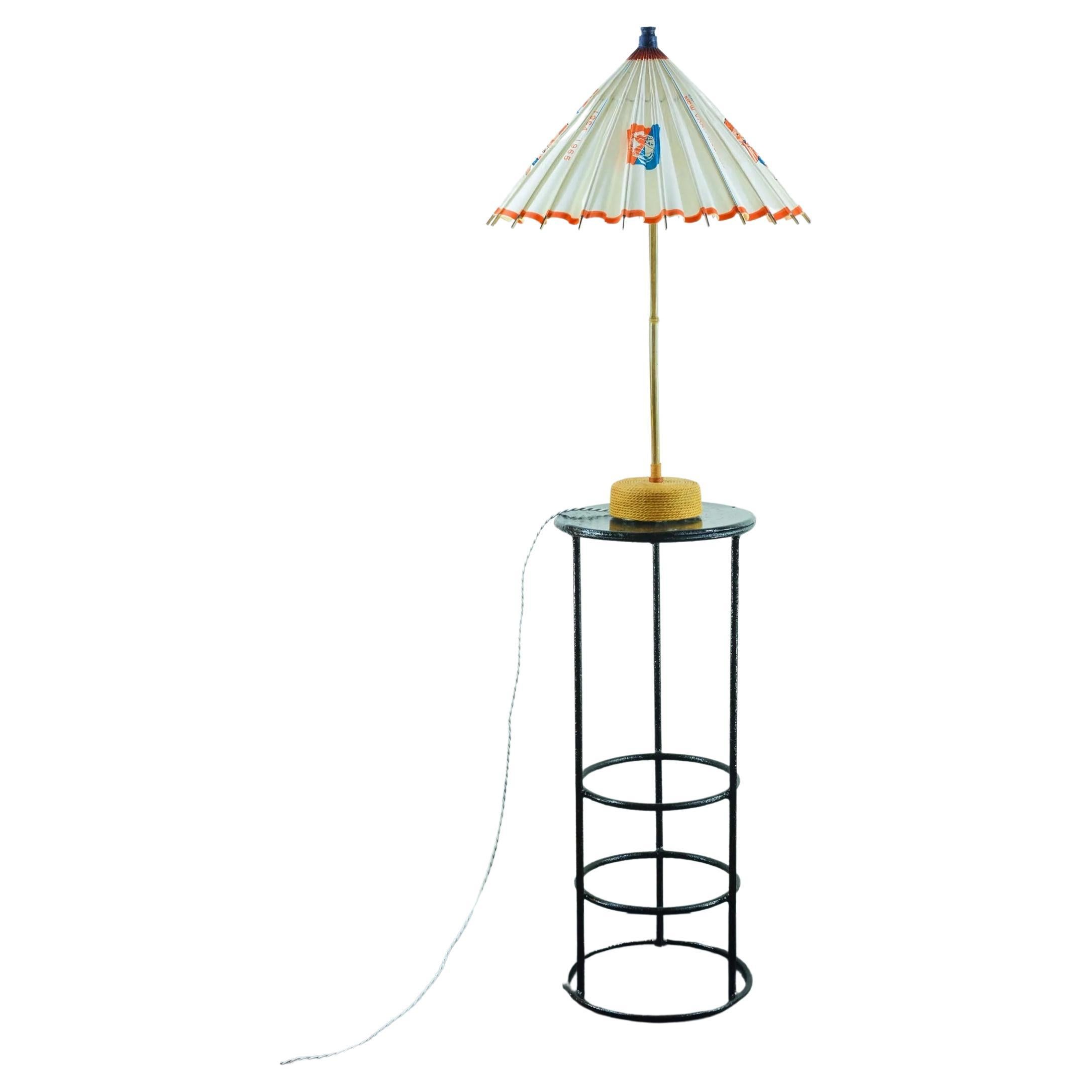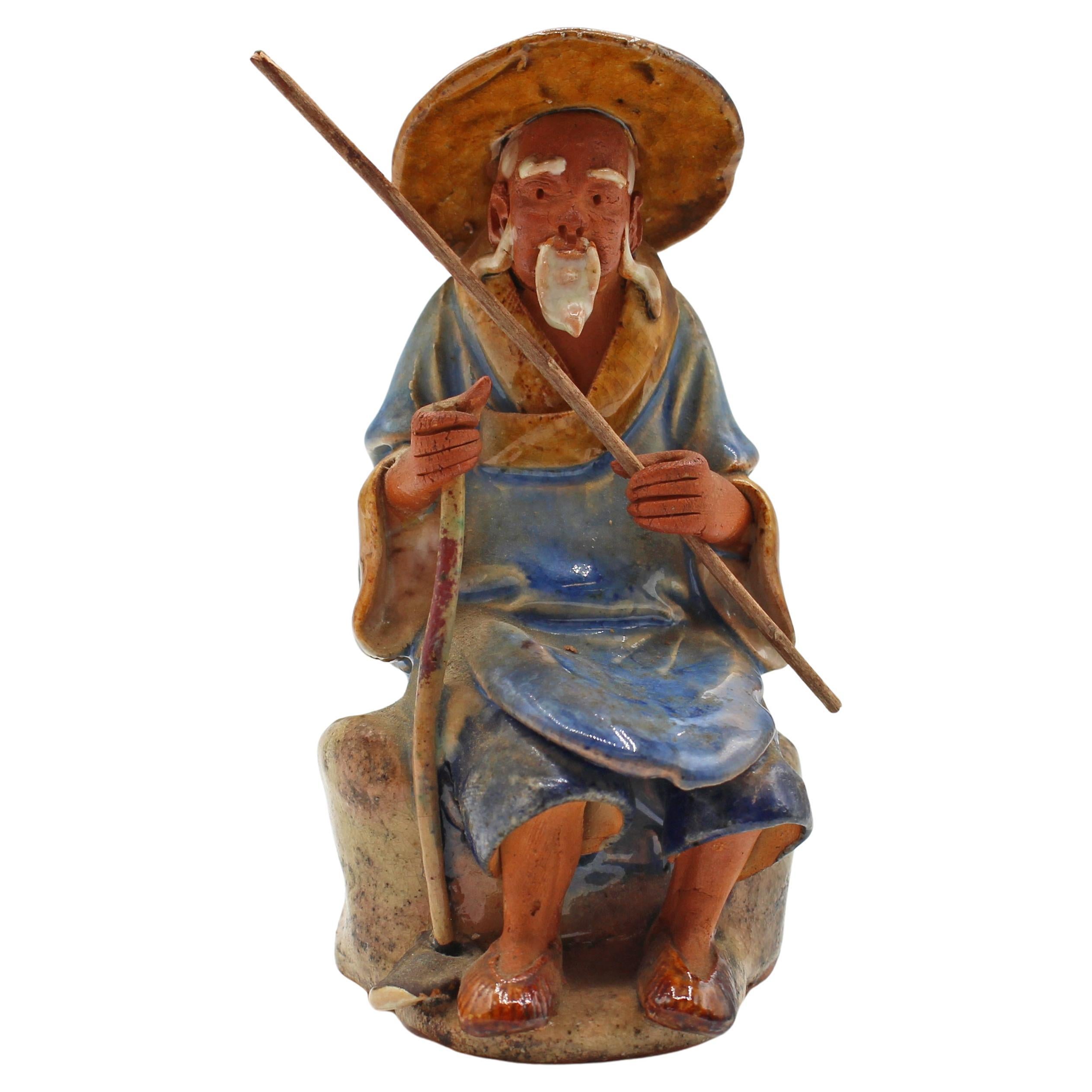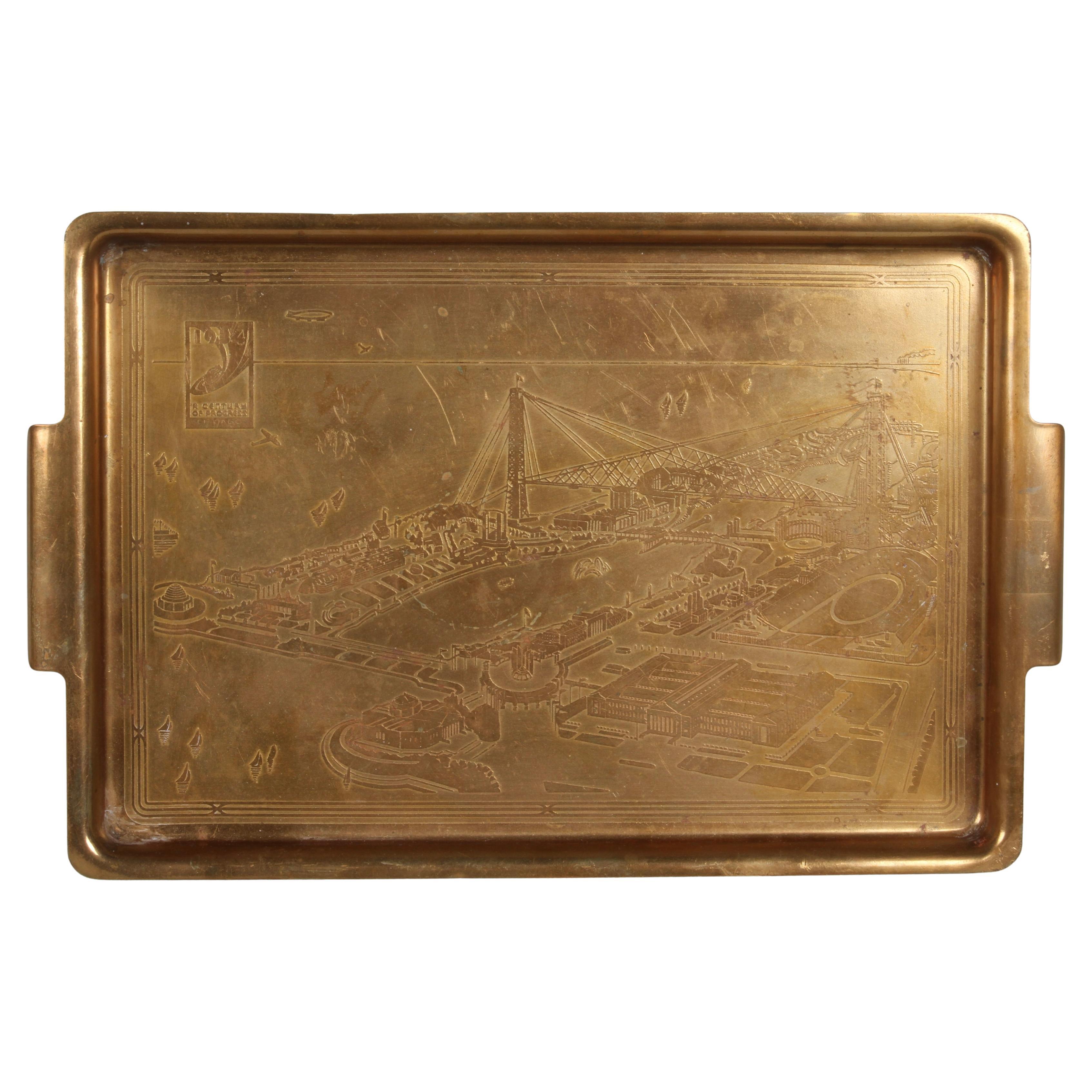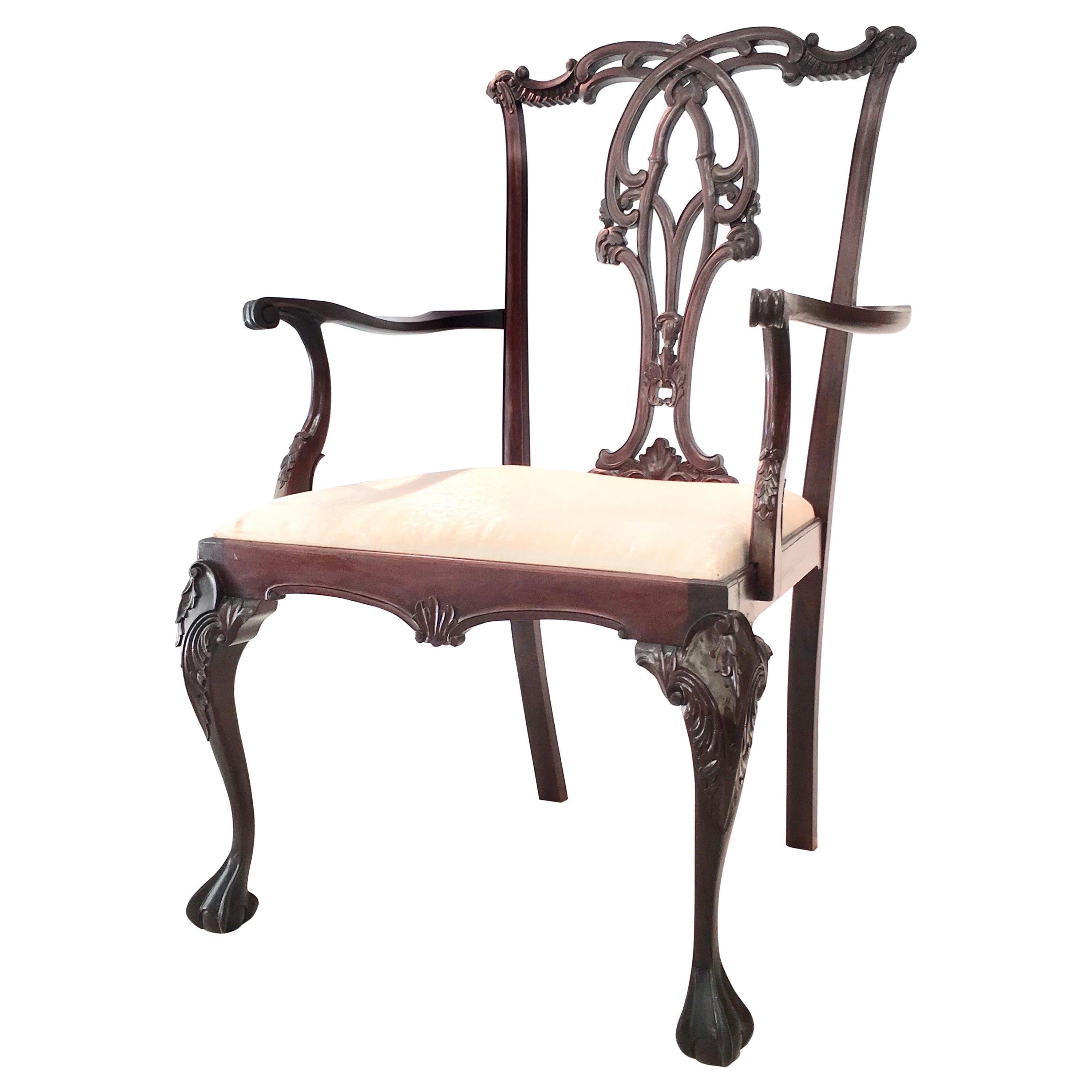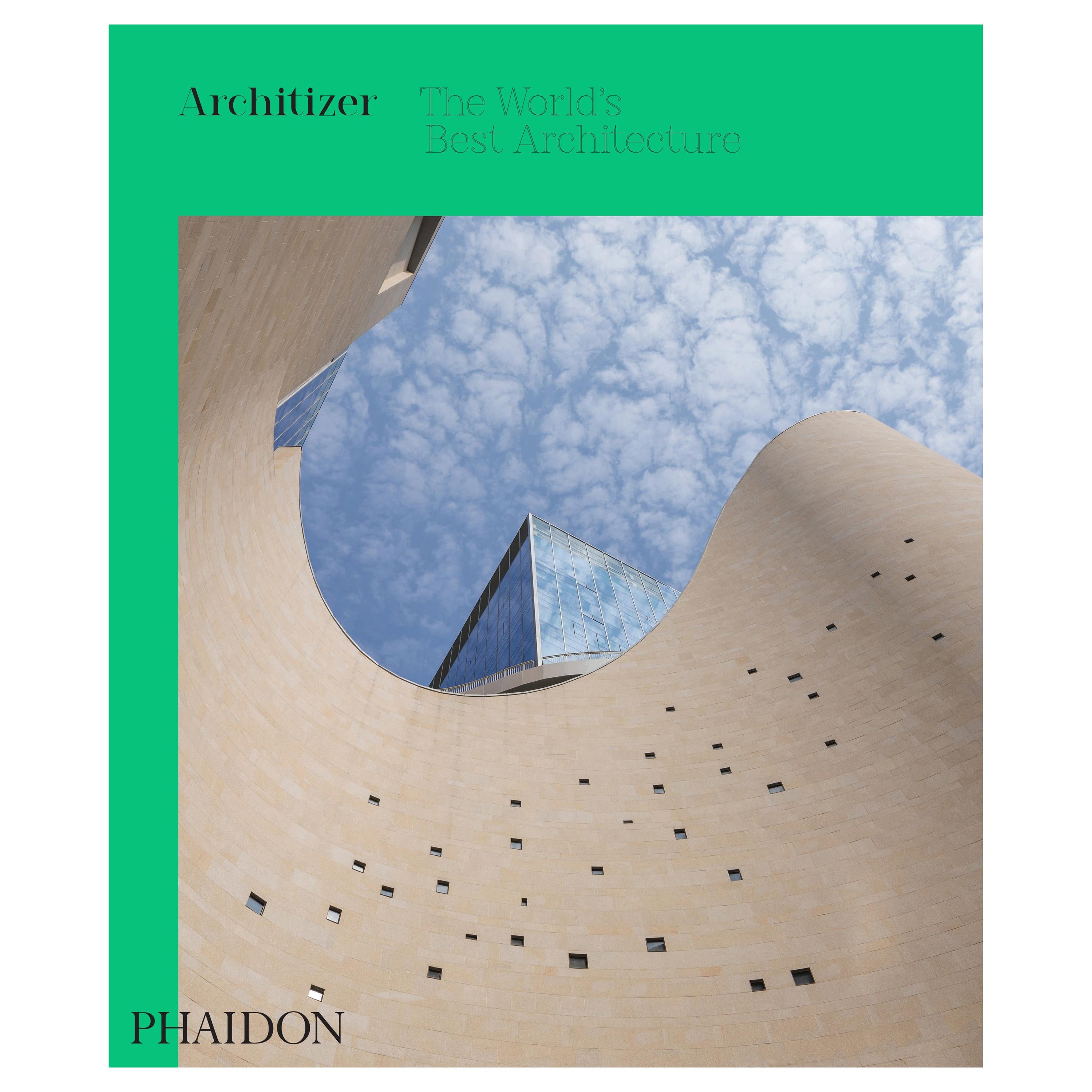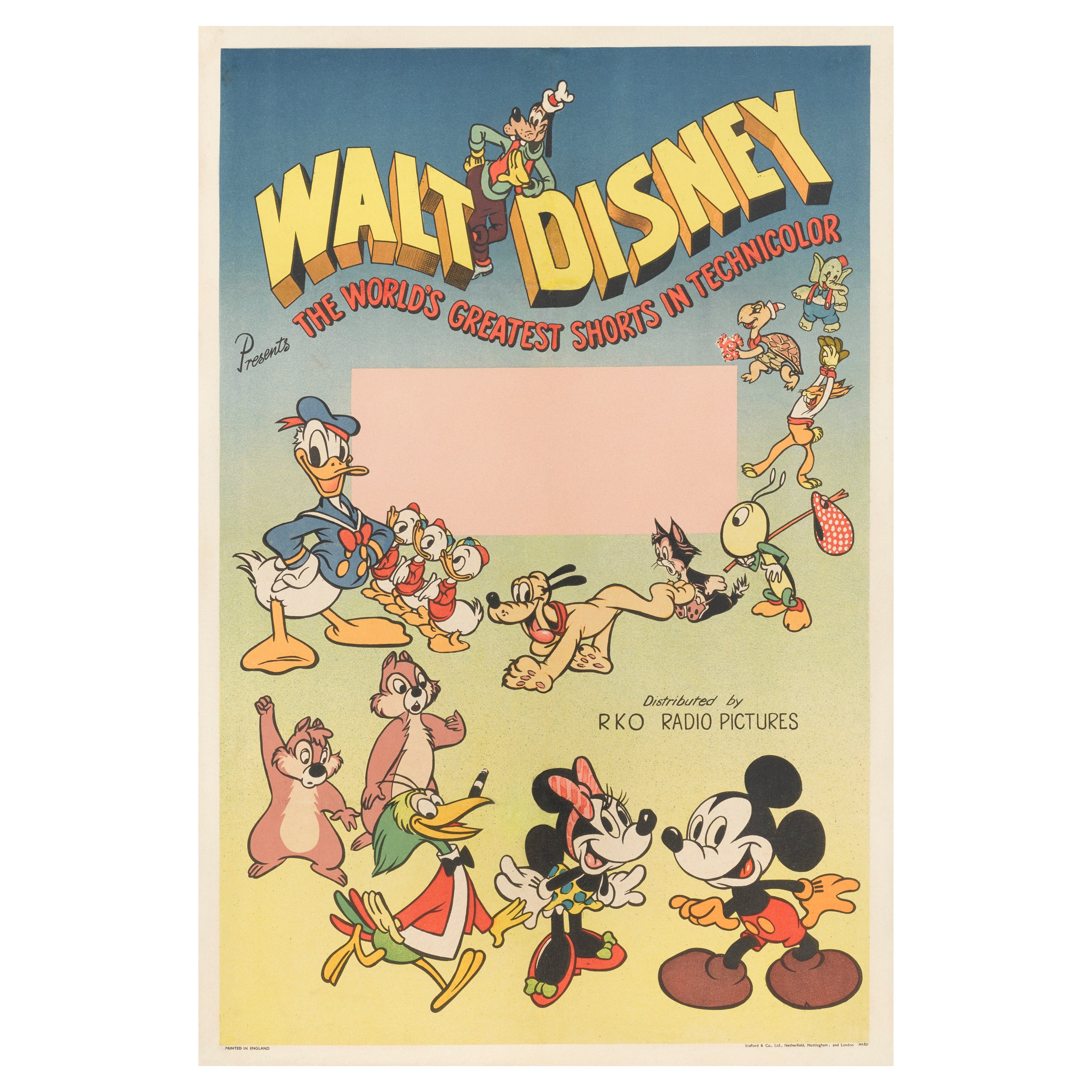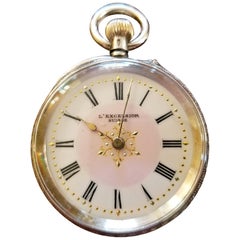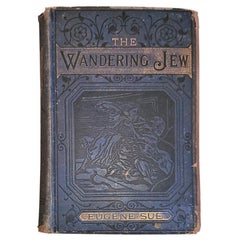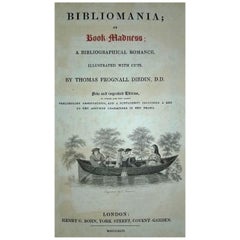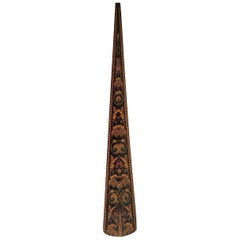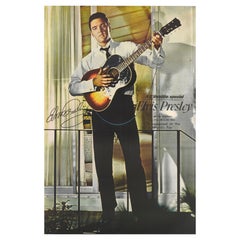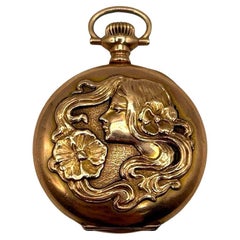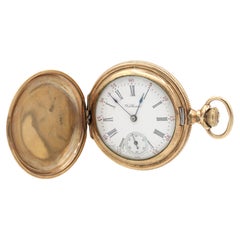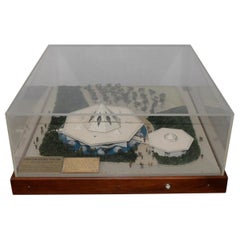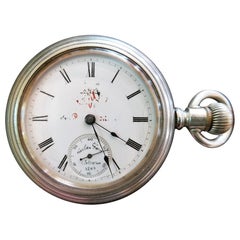
1893 Chicago World’s Fair Waltham Pocket Watch
View Similar Items
Want more images or videos?
Request additional images or videos from the seller
1 of 20
1893 Chicago World’s Fair Waltham Pocket Watch
Price:$255
$300List Price
About the Item
- Creator:Waltham Watch Co (Clockmaker)
- Dimensions:Height: 3.5 in (8.89 cm)Width: 2.25 in (5.72 cm)Depth: 0.75 in (1.91 cm)
- Style:Late Victorian (Of the Period)
- Materials and Techniques:
- Place of Origin:
- Period:
- Date of Manufacture:1893
- Condition:Wear consistent with age and use. Minor losses. Minor fading. In silveroid case which is of the same date or time period. It was not that unusual for Waltham Watches to be sold with these cases. Some 'rubbing'on the face dial.
- Seller Location:Dallas, TX
- Reference Number:1stDibs: LU3978115329632
About the Seller
4.9
Vetted Professional Seller
Every seller passes strict standards for authenticity and reliability
Established in 2015
1stDibs seller since 2018
390 sales on 1stDibs
Typical response time: 2 hours
Authenticity Guarantee
In the unlikely event there’s an issue with an item’s authenticity, contact us within 1 year for a full refund. DetailsMoney-Back Guarantee
If your item is not as described, is damaged in transit, or does not arrive, contact us within 7 days for a full refund. Details24-Hour Cancellation
You have a 24-hour grace period in which to reconsider your purchase, with no questions asked.Vetted Professional Sellers
Our world-class sellers must adhere to strict standards for service and quality, maintaining the integrity of our listings.Price-Match Guarantee
If you find that a seller listed the same item for a lower price elsewhere, we’ll match it.Trusted Global Delivery
Our best-in-class carrier network provides specialized shipping options worldwide, including custom delivery.More From This Seller
View All19th Century Swiss Ladies L Excelsior Silver Pocket Watch
Located in Dallas, TX
Gorgeous little solid silver Swiss ladies pocket watch from 1880.
L'Excelsior Suisse
White and pink enameled face with gorgeous silver repousse work on rear with unmarked armor...
Category
Antique Late 19th Century Swiss Late Victorian More Clocks
Materials
Silver
The Wandering Jew by Eugene Sue Complete Edition with Illustrations
Located in Dallas, TX
Presenting a rare first edition hardback copy of The Wandering Jew by Eugene Sue, Complete Edition IN ONE VOLUME with Illustrations by GAVARNI and GIRARDET, published by George Routl...
Category
Antique Late 19th Century English Late Victorian Books
Materials
Paper
'Bibliomania or Book Madness' by Thomas Frognall Dibdin, 1842
Located in Dallas, TX
PRESENTING AN EXTREMELY RARE EDITION hardback copy of ‘Bibliomania or Book Madness; A Bibliographical Romance. Illustrated with Cuts’, by Thomas Frognall Dibdin, D.D. New and Improve...
Category
Antique Mid-19th Century English Early Victorian Books
Materials
Paper
Rare 19th Century English Tunbridgeware Hair Pin or Slide
Located in Dallas, TX
PRESENTING an EXTREMELY UNIQUE and RARE 19C British Tunbridgeware Hair Pin/Bobbin or Slide.
This slide is unlike any of it’s kind we have seen before, it is a VERY RARE survivor.
From circa 1860 – 80 and made in Tunbridge Wells, England.
Made of walnut with gorgeous marquetry inlay on the entirety of the front with classic Tunbridgeware micro-mosaic all over the front. The rear is walnut.
The marquetry inlay appears to be various different woods, namely, maple, walnut and satinwood.
Would have been worn in a Lady’s hair bun with the micro-mosaic facing forward.
This would have belonged to a VERY ELEGANT LADY in the mid to late 19th Century.
Tunbridge ware is a form of decoratively inlaid woodwork, typically in the form of boxes, that is characteristic of Tonbridge and the spa town of Royal Tunbridge Wells in Kent in the 18th and 19th centuries. The decoration typically consists of a mosaic of many very small pieces of different coloured woods that form a pictorial vignette. Shaped rods and slivers of wood were first carefully glued together, then cut into many thin slices of identical pictorial veneer with a fine saw. Elaborately striped and feathered bandings for framing were pre-formed in a similar fashion.
There is a collection of Tunbridge ware in the Tunbridge Wells Museum and Art Gallery in Tunbridge Wells.
The famous makers of Tunbridge ware were in the Tunbridge Wells area of Kent; their most notable work was from circa 1830-1900.
Early makers of Tunbridge ware, in Tunbridge Wells in the mid-18th century, were the Burrows family, and Fenner and Co. In the 19th century, around 1830, James Burrows invented a technique of creating mosaics from wooden tesserae. Henry Hollamby, apprenticed to the Burrows family, set up on his own in 1842 and became an important manufacturer of Tunbridge ware, employing about 40 people.
Edmund Nye (1797–1863) and his father took over the Fenner company when William Fenner retired in 1840, after 30 years in partnership with him. Thomas Barton (1819–1903), previously apprenticed at the Wise factory, joined the Nyes in 1836, and worked as Nye’s designer; he took over the business in 1863 and continued there until his death.
In Tonbridge (near to Tunbridge Wells), George Wise (1703–1779) is known to have had a business in 1746. It continued with his son Thomas, and Thomas’s nephew George (1779–1869), who took over in 1806. In its early years the company made articles such as workboxes and tea caddies with prints of popular views; later items had pictures created from mosaics. Their workshop in Tonbridge, Wise’s Tunbridge Ware Manufactory, was next to the Big Bridge over the Medway; the building was demolished in 1886 to widen the approach to the bridge.
Tunbridge ware became popular with visitors to the spa town of Tunbridge Wells, who bought them as souvenirs and gifts. Articles included cribbage boards, paperweights, writing slopes, snuffboxes and glove boxes.
At the Great Exhibition of 1851, Tunbridge ware by Edmund Nye, Robert Russell and Henry Hollamby was shown; Edmund Nye received a commendation from the judges for his work. He exhibited a table depicting a mosaic of a ship at sea; 110,800 tesserae were used in making the picture.
The manufacturers of Tunbridge ware were cottage industries, and they were no more than nine in Tunbridge Wells and one in Tonbridge. The number declined in the 1880s; competent craftsmen were hard to find, and public tastes changed. After the death of Thomas Barton in 1903 the only surviving firm was Boyce, Brown and Kemp, which closed in 1927.
Marquetry was an old technique which was continued by Nye and Barton to create images such as birds or butterflies.
‘Green Oak’ as caused by the fungus Chlorociboria aeruginascens.
Stickware and half-square mosaic was invented by James Burrows in about 1830: a bunch of wooden sticks of different colours, each having triangular or diamond-shaped cross section, were tightly glued together; in the case of stickware, the resulting block was dried, then turned to form an article such as the base of a pincushion. For half-square mosaic, thin slices were taken from the composite block, and applied to a surface.
Tesselated mosaic, was a development by James Burrows of half-square mosaic; it was adopted by George Wise and Edmund Nye. Minute tesserae were used to form a wide variety of geometric and pictorial designs.
Many sorts of wood were used for the various colours; about 40 were in regular use. Only natural colors were used; green was provided by “green oak”, produced by the action of fungus on fallen oak. Designs for articles were often taken from designs of Berlin wool work.
Category
Antique Late 19th Century English High Victorian Collectible Jewelry
Materials
Satinwood, Walnut
1st US Edition of ‘Enquiry Concerning Political Justice’ by W Godwin 1796
Located in Dallas, TX
PRESENTING AN EXTREMELY RARE FIRST US EDITION hardback copy of “Enquiry Concerning Political Justice and Its Influence on Morals and Happiness by William Godwin, First American from ...
Category
Antique Late 18th Century American George III Books
Materials
Leather, Paper
American Hepplewhite Virginian Secretary Chest with Civil War Provenance
By George Hepplewhite
Located in Dallas, TX
PRESENTING a FANTASTIC and HISTORIC Early 19C American Hepplewhite Virginian Secretary Chest with OUTSTANDING Provenance.
This Secretary Chest was made in Virginia in the Early 19th Century, circa 1810.
It is made of cherry, walnut and maple and is most definitely in the Hepplewhite Style of the period, with it’s original Hepplewhite brass drawer pulls.
IT IS A REALLY INTRIGUING AND HISTORIC PIECE, ESPECIALLY, WHEN VIEWED IN CONTEXT WITH IT”S AMAZING PROVENANCE!
This piece was originally owned by Major William Alexander Obenchain who ‘hailed’ from the State of Virginia.
He was an engineer and was in the Virginia Corps of Engineers during the Civil War and served on General Robert E. Lee’s staff. It was acquired by him before the Civil War and we believe that this piece was on campaign with him during the War. We know for a fact that he fought at the Richmond Campaign in 1864, as we have, in our Collection, his original Field Map for that Campaign which ended the War.
It has remained in family ownership ever since.
It has come directly from the Family Estate, together with other VERY IMPORTANT items belonging to Major Obenchain and other IMPORTANT items that belonged to his wife, Eliza Calvert Hall-Obenchain. ALL these items contained in the Collection, are listed/posted individually on our Website.
The top drawer is on retractable curved side hinge supports and pulls outwards and drops to reveal a secretary and writing area.
The Bureau/Secretary Gallery has 6 drawers and 6 cubbies, a central tabernacle door with another drawer and 2 cubbies and this is flanked by 2 secret pull out compartments.
The central tabernacle door has it’s original key and working lock.
Closed, it is almost ‘flush’ like the rest of the drawers, with some very minor bowing through age.
The 3 drawers underneath are graduated in size and it ends with a serpentine shaped base and sits on four hand carved legs with original metal casters, marked ‘Universal 3’.
It has it’s original brasses and hardware throughout, save the addition to 2 contemporary replacement brass hinges to the drop down desk front, as the original hinges were broken, could not be repaired and were not supporting the weight of the drop down leaf.
Some minor repairs but not noticeable.
Otherwise, the piece is in it’s entirely, ORIGINAL condition!
What makes this piece even MORE INTRIGUING and APPEALING HISTORICALLY, are the 2 ‘historic’ circular holes on the piece:-
(1) in the back of the piece as seen in the photos. This hole is not symmetrical or fully round and appears to serve no purpose to the piece whatsoever. Sometimes, pieces have holes for wiring for lighting, put in them over the years, but this one never had such lighting or, indeed, any such explanation for this hole, AND
(2) the rear hole is replicated, in the corner portion of the bottom drawer and someone (a very long time ago) has used a tin can top, to cover the hole in the back of the drawer. The tin can top is period to the Civil War Era and is embossed “Minimum Volume 1 Pint”.
Our conclusion, is that (whilst we are, by no means ballistic experts) that these holes were created by musket balls, fired during one of the Major’s campaigns in the Civil War. It is entirely conceivable that this piece, being strapped into a covered wagon for carriage, would have been on it’s side. We are of the opinion that both holes, were caused or created by a musket ball entered the chest trough the base and back. We also believe that ‘the Major’, used what he had at his disposal on the battlefield, namely, a tin can lid to repair the hole in the drawer.
SO THIS PIECE IS A VERY SPECIAL PIECE OF US HISTORY, INDEED!
NOT ONLY IS IT AN EARLY 19th CENTURY AMERICAN PIECE, WITH A CONNECTION TO THE STATE OF VIRGINIA, THE CIVIL WAR, HISTORIC & IMPORTANT FIGURES IN THAT WAR AND IMPECCABLE PROVENANCE AND HISTORY!
IT IS TRULY UNIQUE!
William Alexander Obenchain. Born April 27, 1841 at Buchanan, Botetourt Co., Virginia.
Parents: Thomas Jefferson Obenchain and Elizabeth Ann Sweetland.
Entered VMI on July 18, 1859 as a member of the VMI (Virginia Military Institute...
Category
Antique Early 19th Century American American Classical Historical Memora...
Materials
Brass
You May Also Like
It Happened at the World's Fair
Located in London, GB
Original US film poster for the 1963 musical comedy film It Happened at the World's Fair.
This film starred Ellen Elvis Presley and was directed by Norman Taurog.
This poster is cons...
Category
Vintage 1960s American Posters
Materials
Paper
1903 Art Nouveau Portrait Repousse Gold Filled Pocket watch by Waltham
By Waltham Watch Co
Located in Van Nuys, CA
Original turn-of-the-century Art Nouveau portrait pocket Gold-filled watch by Waltham featuring a portrait of a female nymph with flowing locks of hair over flowers with matching flo...
Category
Antique Early 1900s American Collectible Jewelry
Materials
Gold, Steel
$715 Sale Price
35% Off
1891 Waltham Ladies Hunting Case Pocket Watch
By American Waltham Watch Co.
Located in Chapel Hill, NC
1891 Waltham Ladies Hunting Case Pocket Watch. 14k yellow gold filled. Case #6590704 by Keystone Watch Case Co. (also marked J. Boss 14k). Seaside movement #9344440 and marked Americ...
Category
Antique 1890s American Aesthetic Movement Collectible Jewelry
Materials
Gold
New York World's Fair "Christian Science Pavilion" Architects Model, circa 1965
Located in San Francisco, CA
New York World's Fair "Christian Science Pavilion" Architects Model, circa 1965
Measures: 27.5" wide x 29.5" deep x 12.5" high
Architects origi...
Category
Mid-20th Century American Historical Memorabilia
Materials
Wood
Roy Lichtenstein the World's Fair, 1964 (Roy Lichtenstein Art in America)
By Roy Lichtenstein
Located in Brooklyn, NY
Roy Lichtenstein designed the cover for this April 1964 issue of Art in America, depicting a “pop panorama” of the New York World’s Fair. A must have 60s Pop Art collectible.
Medium...
Category
Vintage 1960s Books
Materials
Paper
New York 'World's Fair' Bamboo Lamp with Parasol Shade by Christopher Tennant
By Tennant New York
Located in Brooklyn, NY
The World’s Fair Collection is a family of fixtures handmade from sustainably sourced materials and upcycled antique paper parasols given to visitors at ...
Category
2010s American Mid-Century Modern Table Lamps
Materials
Cement, Brass
Recently Viewed
View AllMore Ways To Browse
Silver Waltham Pocket Watch
Used Furniture Waltham
American Waltham Pocket Watch Silver
Keystone Watch
Keystone Watch Case
Waltham Pocket Watch Silver Antique
Army And Navy
Western Memorabilia
Wwii Antiques
John F Kennedy Furniture
Blown Glass Christmas
German Christmas Tree
Vintage Key Machine
Antique Metal Press
Thomas Jefferson
Antique German Christmas
Antique Radios
Hand Crank
